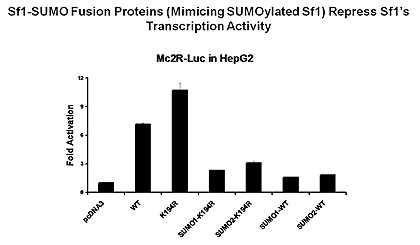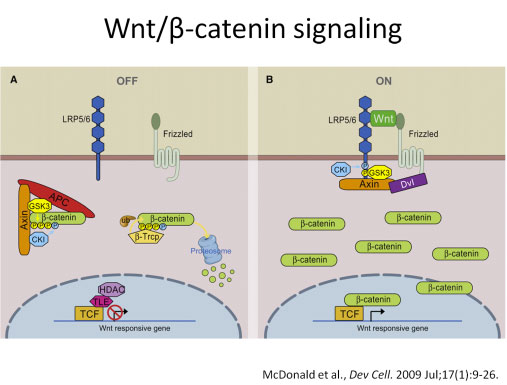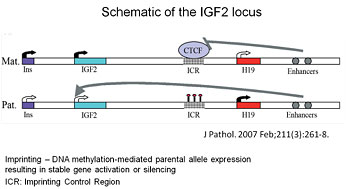Joanne Heaton, B.S., M.S.
Research Laboratory Specialist
Lab Manager


Circa 1972
I'm a long-term University of Michigan research associate (Research Laboratory Specialist Senior) with extensive experience in cell and molecular biology. Much of my work has been in transcriptional and post-transcriptional control of gene expression: (see my CV)
I joined the Hammer Lab as lab manager in 2006.
Research with which I'm associated in the Hammer Lab:
Posttranslational modification of Sf1.
Steriodogenic Factor 1 (Sf1/Nr5a1) is an orphan nuclear receptor that regulates expression of steroidogenic enzymes in differentiated cells and is essential for adrenal gland development. Thus, it plays important roles in both differentiation and proliferation. Sf1 activity is regulated by the posttranslation modifications, phosphorylation and SUMOylation. While it has been shown that ACTH stimulation causes Erk1/2-mediated phosphorylation of Sf1, data from our lab and others suggest that, in the absence of ACTH, CDK7, a cyclin that not only phosphorylates other CDKs but also functions as a component of the general transcription factor TKIIH, is the primary mediator of Sf1 phosphorylation in Y1 mouse adrenocortical carcinoma cells. I participated in a series of experiments carried out primarily by Wei-Hsiung Yang, a postdoctoral fellow in the lab, and aimed at defining how these modifications interact and contribute to Sf1 activation. We reported that Sf1 is selectively SUMOylated at K194 in Y1 adrenocarcinoma cells and that although SUMOylation does not alter the subcellular localization of Sf1, this modification inhibits the ability of Sf1 to activate target genes. We showed that, whereas Sf1 SUMOylation is independent of S203 phosphorylation and is unaffected by ACTH treatment, loss of SUMOylation leads to enhanced Sf1 phosphorylation. Furthermore, preventing Sf1 SUMOylation by a K194R mutation increases the mRNA and protein levels of multiple steroidogenic enzyme genes. Notably, we find that CDK7 binds preferentially to the SUMOylation-deficient form of Sf1 and that selective inhibition of CDK7 reduces both Sf1-CDK7 binding and phosphorylation of Sf1. Based on these observations, we proposed a coordinated modification model in which inhibition of Sf1-mediated transcription by SUMOylation in Y1 adrenocortical cancer cells is the result of reduced CDK7-induced phosphorylation of Sf1. (SUMOylation inhibits SF-1 activity by reducing CDK7-mediated serine 203 phosphorylation. Yang WH, Heaton JH, Brevig H, Mukherjee S, Iniguez-Lluhi JA, Hammer GD. Mol Cell Biol. 2009 29(3):613-25.)


In the normal adrenal cortex, CDK7 is located in the Sf1-expressing and proliferating subcapsular cells. Determining the prevalent posttranslational modification of Sf1 in these cells may help us sort out the mechanisms by which Sf1 regulates proliferation and differentiation. Future studies in this lab will be more closely examine mitogen/IGF2-induced CDK7 phosphorylation of Sf1 and the effect of this pathway on adrenocortical cell proliferation.
IGF2 Signaling:
IGF2 is a developmentally important mitogenic factor that is one of the most upregulated genes in the vast majority of sporadic adrenocortical carcinomas (ACC). Beckwith-Wiedemann syndrome is a rare disorder in which patients display a strong predisposition to certain tumors including ACC. Patients with this condition also show increased IGF2 expression. I participated in the preclinical studies carried out primarily by Ferdous Barlaskar to evaluate the effect of IGF1R inhibitors on IGF signaling and proliferation in ACC cells in culture and on growth of human ACC cell xenografts in mice. We observed that treating ACC cells with IGF1R inhibitors resulted in inhibition of IGF signaling (as determined by Akt phosphorylation) and a significant decrease in proliferation. In addition, the IGF1R antagonist substantially attenuated human ACC cell xenograft tumor growth in athymic mice. Furthermore, treatment with a combination of IGF1R inhibitor and mitotane (the clinical drug therapy for human ACC) had a greater effect, resulting in enhanced tumor growth retardation. These results validate IGF1R as an important target in ACC and, indeed, clinical trials to evaluate the therapeutic efficacy of IGF1R inhibitors are now underway under direction of Dr. Hammer. (Preclinical targeting of the type I insulin-like growth factor receptor in adrenocortical carcinoma. Barlaskar FM, Spalding AC, Heaton JH, Kuick R, Kim AC, Thomas DG, Giordano TJ, Ben-Josef E, Hammer GD. J Clin Endocrinol Metab. 2009 94(1):204-12.

Combination of Wnt and IGF2 signaling:

Dysregulation of the Wnt-signaling pathway results in tumors in a variety of organs, including the adrenal cortex. A large subset of human adrenocortical carcinomas exhibit increased activated/nuclear Beta-catenin (Beta-cat). To better understand the effect of elevated Beta-cat on adrenal development and homeostasis, Alex Kim, a former graduate student in our lab, prepared a mouse model in which Beta-cat is overexpressed in a tissue specific manner by crossing a mouse harboring the Sf1-cre gene with a mouse carrying the Apc floxed/floxed gene. In offspring harboring both transgenes, loss of Apc is expected to cause dissociation of Beta-cat from the degradation complex resulting in greater stability and thereby increased expression. Two models were used; one in which cre is expressed in nearly all the Sf1 positive cells (Sf1-cre high) and one in which cre is expressed in only a portion of the Sf1-positive cells a mosaic manner (Sf1-cre low). In the Sf1-cre high Apc knockout (KO) mouse, the adrenal gland forms but is significantly smaller and has an abnormal structure. Adrenals from Sf1-cre low Apc KO mice begin to develop normally, but by embryonic day 16.5, an expansion of less differentiated, Beta-cat-expressing cells are observed. Increased active Beta-cat is confirmed by increased expression of the target gene, Axin 2. Most interestingly, these mice display an age-related progression from abnormal cells to hyperplasia to adenoma.
As described above, many human ACCs express high level of IGF2 as well as elevated active Beta-catenin. In our Apc knockout mouse model, while all mice appear to have adrenal abnormalities, they do not all develop ACC. Furthermore, the mouse adrenal tumor resulting from overexpression of activated Beta-catenin displayed very high IGF2 levels. Thus, it seems reasonable to propose that elevated Beta-catenin alone is not sufficient to cause cancer and that a second hit may be necessary. This 2nd hit could result in high levels of IGF2.

Studies, initiated by Ferdous Barlaskar, a former student in the lab, are examining the results of a combination of overexpression of Beta-cat and IGF2. To generate a mouse strain with increased levels of IGF2, Ferdous crossed Sf1-crelow mice with mice harboring loxP sites flanking the Igf2/H19 imprinting control region (ICR). (Thorvaldsen, J.L., Duran, K.L., Bartolomei, M.S., 1998 Genes Dev 12, 3693-702). Deletion of the H19 differentially methylated domain (a portion of the ICR) results in loss of imprinted expression of H19 and Igf2. These mice display an approximate 2-fold increase in IGF2 expression. Offspring from this cross were then crossed with the Apc knockout mice to give double knockout mice with elevated levels of both factors. A group of us in the lab are evaluating these mice to determine whether they display signs of adrenal abnormalities earlier in life and/or with greater frequency.





